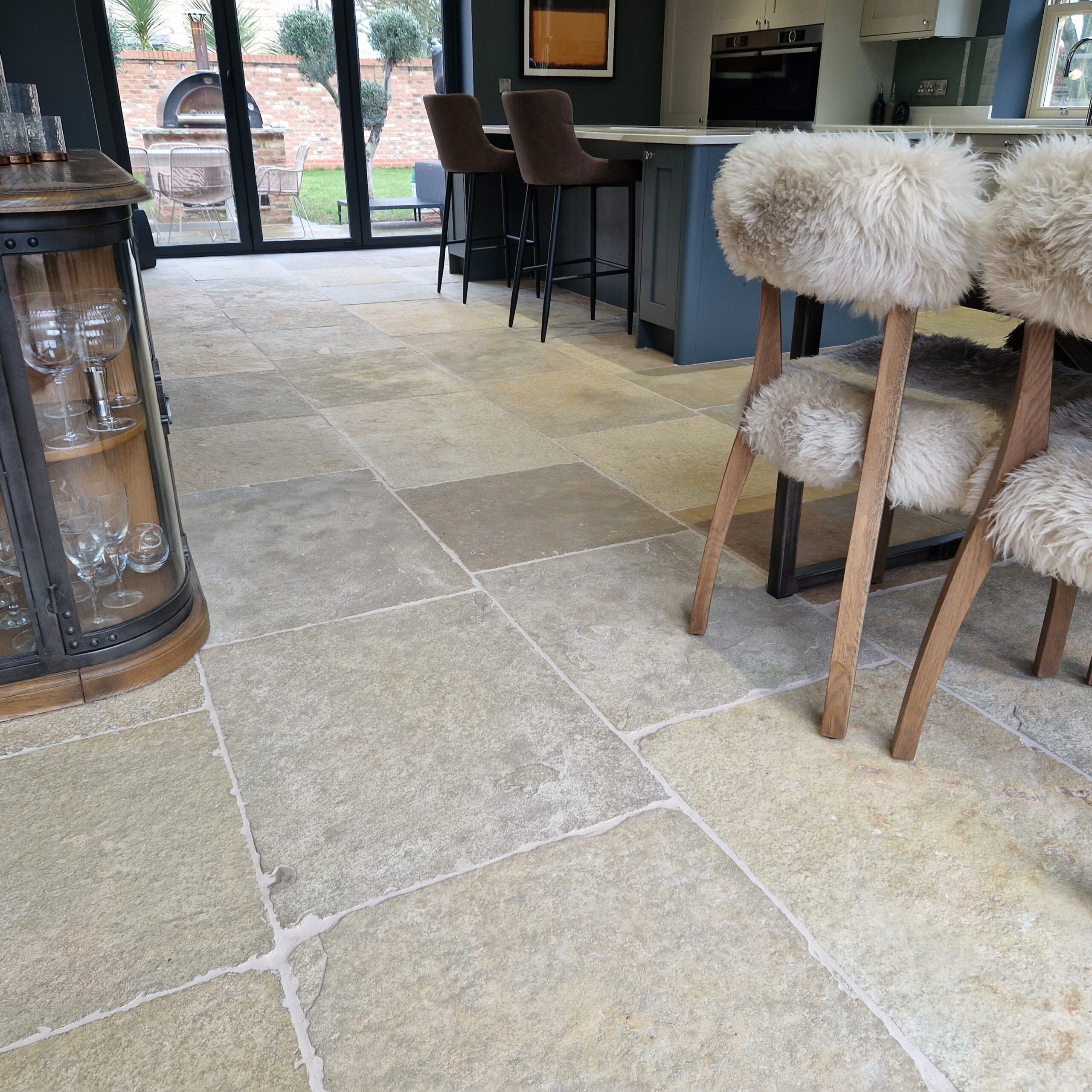Discover how limestone’s timeless elegance can elevate your living space from ordinary to extraordinary – a complete guide to this luxurious natural stone.
Introduction: The Timeless Appeal of Limestone
Limestone has been a cornerstone of architectural excellence for millennia, gracing everything from ancient Egyptian pyramids to modern luxury homes across the UK. This natural stone’s enduring popularity stems from its unique combination of elegance and durability, making it a premium choice for contemporary interiors. In Britain’s evolving home design landscape, limestone flooring has experienced a remarkable 47% increase in residential installations over the past five years, cementing its position as a leading choice for discerning homeowners.
Understanding Limestone: Nature’s Premium Flooring
Limestone is a sedimentary rock formed over millions of years through the compression of marine organisms and calcium-rich deposits. The UK market offers several grades of limestone, ranging from dense, fossil-rich varieties to more uniform, fine-grained options. Each piece tells a unique geological story, with natural variations in colour, texture, and pattern that make every floor installation unique. The durability of quality limestone flooring is impressive, with properly maintained installations lasting 50-100 years or more.
- Grade A: Premium, dense limestone with minimal veining
- Grade B: Standard grade with moderate fossilisation
- Grade C: More varied patterns and textures
- Colours ranging from cream to deep grey
- Typical thickness options: 15mm, 20mm, and 30mm
The Advantages of Limestone Flooring
Limestone flooring offers exceptional thermal properties, maintaining a comfortable temperature year-round. Recent studies show that natural stone flooring can reduce heating costs by up to 12% when compared to synthetic alternatives. The material’s natural thermal mass helps regulate indoor temperatures, while its compatibility with underfloor heating systems makes it an excellent choice for modern homes. Furthermore, limestone’s environmental credentials are impressive, with a significantly lower carbon footprint than manufactured flooring options.
- Natural insulation properties
- Excellent thermal conductivity for underfloor heating
- Environmentally sustainable choice
- Adds up to 7% to property value
- Hypoallergenic properties
Design Possibilities with Limestone
The versatility of limestone flooring opens up countless design possibilities. From traditional honed finishes to contemporary tumbled effects, limestone can complement any interior style. Popular formats include large-format tiles for spacious areas and modular patterns for more traditional settings. Current UK design trends show a 35% preference for larger format tiles, particularly in open-plan living spaces.
- Finishes: Honed, polished, brushed, and tumbled
- Sizes: From 300x300mm to 900x900mm
- Popular patterns: Running bond, herringbone, and square layouts
- Seamless indoor-outdoor transitions
Installation Considerations
Professional installation is crucial for limestone flooring success. The subfloor must be perfectly level and capable of supporting the considerable weight of stone tiles. A typical installation requires specialist tools and expertise, with projects usually taking 3-5 days for an average-sized room. Professional installation costs in the UK currently range from £45-75 per square metre, excluding materials.
- Essential subfloor preparation steps
- Moisture testing requirements
- Recommended adhesives and grouts
- Expansion joint specifications
- Post-installation curing period
Maintenance and Care
Maintaining limestone flooring requires a consistent but straightforward care routine. Regular cleaning with pH-neutral products helps preserve the stone’s natural beauty, while periodic sealing – typically every 3-5 years – protects against staining and wear. Professional maintenance services recommend twice-yearly deep cleaning to maintain optimal appearance and longevity.
- Daily: Sweep or vacuum with soft brush attachment
- Weekly: Mop with pH-neutral cleaner
- Quarterly: Check sealer effectiveness
- Annually: Professional deep clean
- Every 3-5 years: Reseal surface
Cost Analysis
While limestone flooring represents a significant initial investment, its longevity and value appreciation make it cost-effective over time. Current UK market prices range from £50-120 per square metre for quality limestone tiles, with installation and materials adding approximately £75-100 per square metre. When factoring in the minimal maintenance costs and potential property value increase, limestone offers excellent return on investment.
Making the Right Choice
Selecting the perfect limestone flooring requires careful consideration of several factors. Room usage, local climate, and existing décor all play crucial roles in the decision-making process. Consulting with specialist suppliers and installers is essential – look for those with membership in the Stone Federation Great Britain for assured quality and expertise.
- Assess room usage and traffic levels
- Consider local climate and humidity
- Evaluate existing décor compatibility
- Request samples for in-situ testing
- Verify supplier credentials and warranties
Conclusion: Transform Your Space with Limestone
Limestone flooring represents a premium investment in your home’s future, combining timeless beauty with practical durability. With proper installation and maintenance, it will continue to enhance your living space for generations. As the UK’s interest in natural, sustainable building materials continues to grow, limestone remains at the forefront of prestigious flooring choices. Whether you’re renovating a period property or creating a contemporary living space, limestone flooring offers the perfect blend of luxury, practicality, and enduring value.
FAQ
Does limestone keep weeds away?
Does lime kill moss or certain weeds? Limestone will do nothing to help kill weeds or moss. However, because moss usually likes acidic (lower pH) soil, it could potentially lower your chances of future growth. But it will not do anything to existing moss or weeds.
What does limestone do for your yard?
Lime can also cleanse the soil, removing toxicities and infusing the ground with essential nutrients. This often clears up common grass and turf issues, leading to a healthier and better looking yard. Made of limestone or chalk, lime’s main component is calcium carbonate. It adds calcium and magnesium to the soil.
What rock does limestone turn into?
Marble. When limestone, a sedimentary rock, gets buried deep in the earth for millions of years, the heat and pressure can change it into a metamorphic rock called marble. Marble is strong and can be polished to a beautiful luster. It is widely used for buildings and statues.
Sources
[1] https://en.wikipedia.org/wiki/Limestone
[2] https://www.britannica.com/science/limestone
[3] https://mineralseducationcoalition.org/minerals-database/limestone/


Leave a Reply